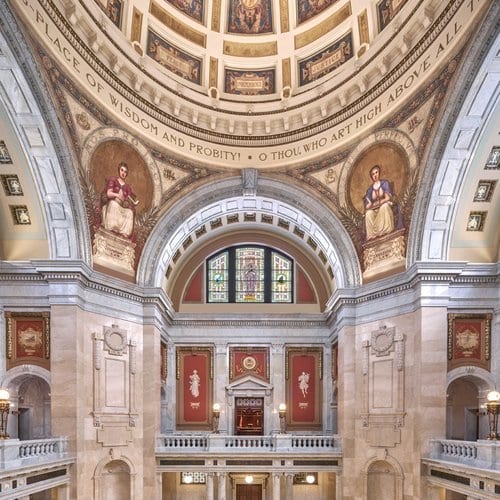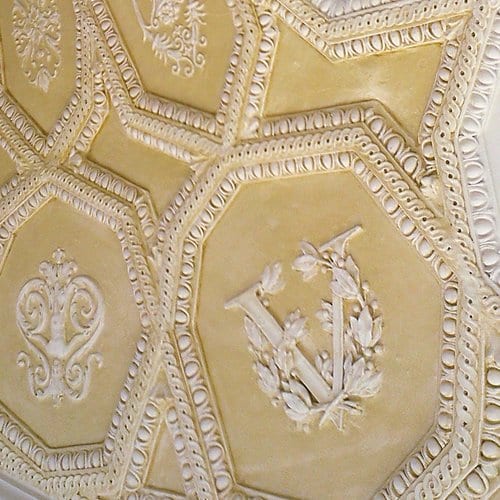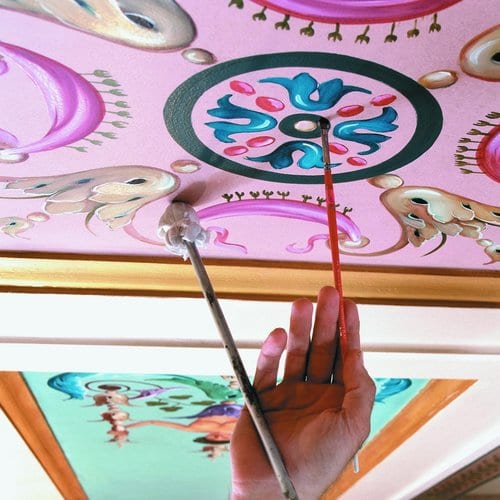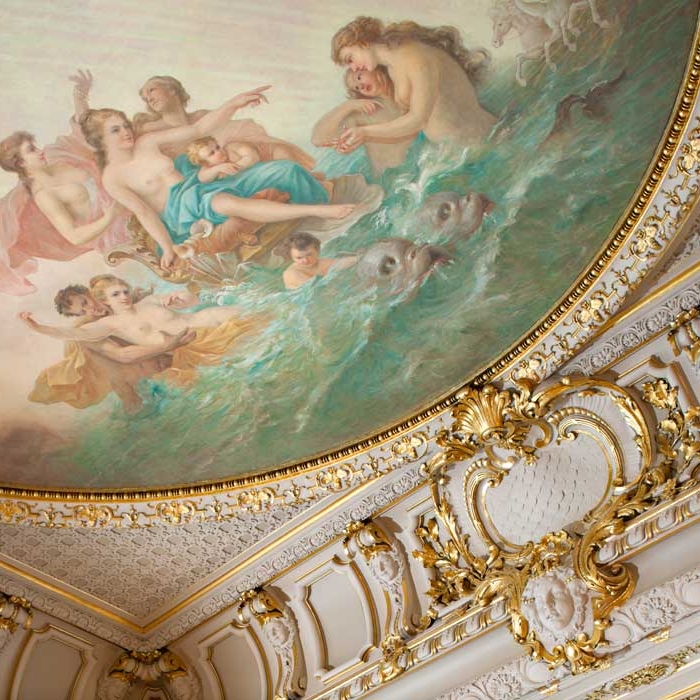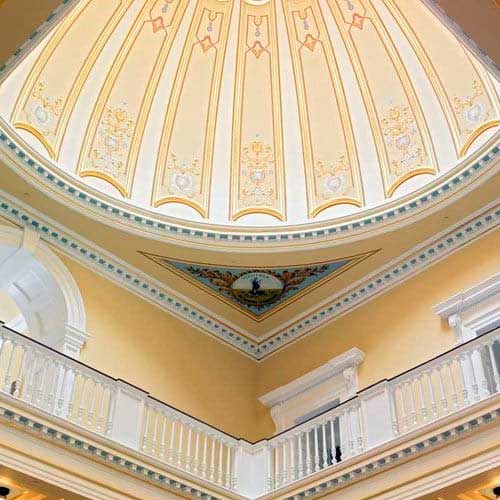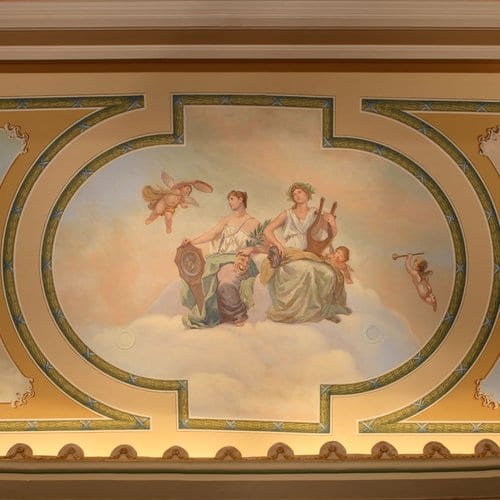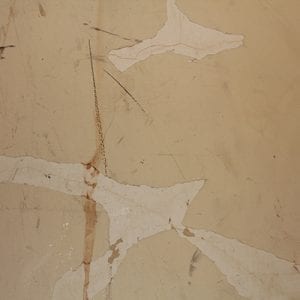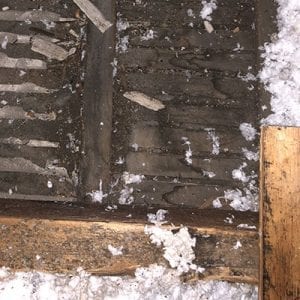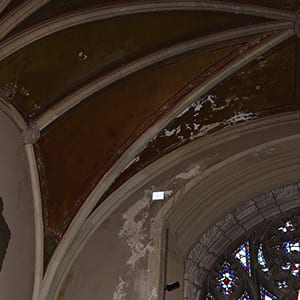Historic Building Conditions Assessment, Reports and Services
Understand and document the current conditions of your historic building in order to anticipate and plan for conservation, restoration, and preservation needs.
When it comes to working on a historic building or structure, utmost care must be taken at every step to ensure that the historic and cultural integrity of the building is preserved. Whether the work in question is conservation, restoration, or preservation-focused or an entirely new construction, we start by understanding the existing conditions of the building.
What Is a Conditions Assessment Report?
A comprehensive building conditions assessment provides understanding and documentation of the current conditions of a historic building in order to anticipate and plan for conservation, restoration, and preservation needs. When performing a building condition assessment, the report can help answer questions that cover everything from the earliest planning phases to project sequencing, restoration and preservation work, new construction, and more.
Even if conservation work and/or new construction are not planned, an assessment can help you to document what exists, which may inform ongoing maintenance and stabilization efforts, as well as possible safeguards against future damage.
At John Canning & Co., our expert artisans and tradesmen have more than 45 years of experience investigating, analyzing, and documenting historic structures for owners and architects looking to preserve the historic fabric of their building.
We also assist with emergency relief and disaster assessments of historic finishes, murals/artwork and decorative elements when the need arises. Fire and water damage are common issues when disaster strikes and the sooner the building and finishes are assessed by a professional with historic building/finish experience the better. During this assessment, conditions can be identified, preventative measures to reduce further damage can be taken and a plan of action can be made for restoration and recovery.
If you would like to connect with one of our professional consultants please request a consultation below.
Our Process
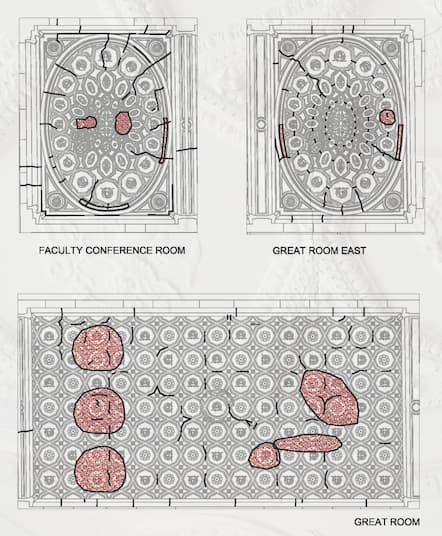
Each condition assessment must, by nature, be tailored to the individual historic building or structure being investigated or analyzed. That being said, most assessments follow an approach similar to the one outlined below.
Before conducting the on-site investigation or assessment, we prefer to review any available primary sources—such as architectural specifications, drawings, diary entries, newspaper or magazine articles, etc. These resources, paired with an understanding of the owner’s goals and aspirations, offer valuable insight into the history of a structure and allow us to theorize about important elements or areas within a structure which may warrant closer on-site inspection.
This background research is followed by an on-site assessment, where our experts examine, investigate, and assess all relevant areas within a structure. This could include decorative elements (like paint, gilding, ornamental plaster, etc.), structural elements (like marble, stone, wood, metal, etc.), as well as murals and fine art. The conditions of these elements are thoroughly documented through f photographs, architectural drawings, and overlay mappings (when appropriate).
Off-site laboratory analysis may be necessary to identify and document certain materials, such as paint and finishes, plaster substrates and compositions, wood species, etc.
In addition to documenting the existing conditions of the structure, the resulting report can help to inform project sequencing, budgets, and schedules, and typically includes recommended next steps for maintenance and stabilization.
Cost Factors
The exact cost of conducting a conditions assessment for a historic structure will naturally depend upon a number of factors. These may include:
- The size of the building or structure to be assessed
- The complexity of the work and the scope of the overall project
- Whether or not there are accessibility or safety concerns (e.g., whether or not scaffolding or stabilization efforts will be required)
- Whether or not other types of assessment (historic paint and finishes investigation, plaster conditions survey, etc.) are required
For this reason, it can be difficult for us to state what the typical cost might be for an “average” conditions assessment. If you are considering an assessment for your historic building or structure, we encourage you to contact us directly, which will allow us to give you more accurate pricing.
Our Specialties
In addition to the historic building conditions assessment, we specialize in a number of other complementary services which may form the logical next step after an initial assessment. These may include:
Selected Projects
We carefully conserved and restored all aspects of the Luzerne County Courthouses historic fabric: marble, metal, plaster, paint, and mural artwork.
We were involved in plaster stabilization and creating a new ceiling and beam structure independent of the severely compromised Garrett Hall building.
Our team of artisans were the restoration consultants and specialty contractors for the historic Stadium Theatre decoration and finishes.
John Canning & Co. scheduled all trades and performed specialty contracting to conserve and restore fine-art murals, ornamental plaster, gilding, decorative finishes and the parquet floor of the ornately decorated Cosmos Club ballroom in Washington, DC.
Our artisans were entrusted with the restoration and conservation of historic decorative painting and gilding originally designed by Thomas Jefferson.
Our conservation team restored the plaster work throughout the Colonial Theatre’s auditorium and public spaces, including casting ornamental plaster.
“Canning understands materials and specifications, especially traditional materials and techniques, and understands and appreciates the benefits of a truly collaborative effort in design excellence. [WV Capitol Dome].”
“It has been my pleasure to work with the John Canning & Co. for over 15 years. Their talent and skill in execution is unique in the arena of historic restoration projects.”

